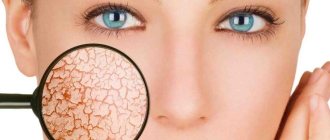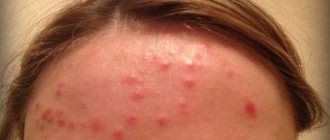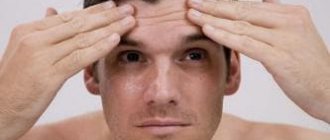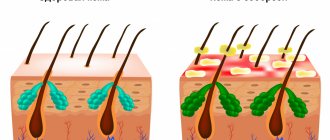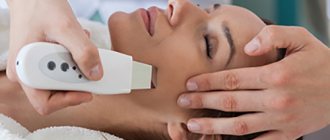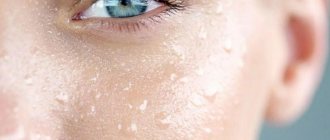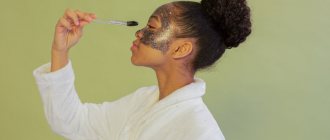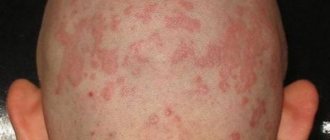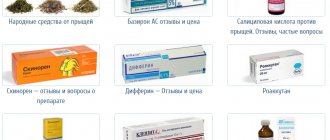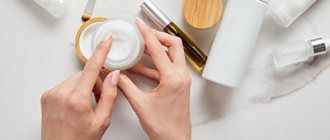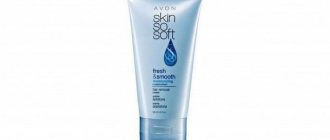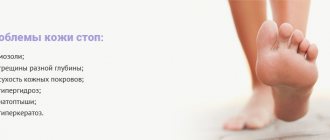We are glad to meet you again on the pages of our blog! Today we decided to devote an article to two skin problems that often go hand in hand. If a person has oily facial skin and acne, what should one do in this case? How to get rid of such imperfections without inadvertently damaging the dermis, and become attractive?
After all, attempts to reduce sebum secretion often lead to the appearance of new rashes. And vice versa - eliminating acne does not guarantee that the sebaceous glands will produce less sebum, and the pores will decrease in size.
Every person has sebaceous glands on the skin of their face and body. For some, they produce very little fat, while others unsuccessfully try to remove the unpleasant oily sheen.
On the face, the glands work especially actively, secreting sebum through the pores. The largest number of pores are located in the T-zone (middle of the forehead, nose, small areas of skin near the nostrils, chin). When sebum production is too active, the pores become enlarged and can be easily replaced with the naked eye.
Moreover, fat that oxidizes under the influence of oxygen darkens, forming blackheads (comedones).
The appearance of acne may be due to inappropriate skin care or natural processes occurring in the skin cells. As oil accumulates in the pores, fatty acids are formed, which contribute to the development of inflammation. This is why pimples form mainly at the site of clogged pores.
Oily facial skin: causes of seborrhea
Oily skin increases due to overactive sebaceous glands, and this is one of the main links in the pathogenesis of acne. Several factors contribute to increased sebum production 192:
- Hormones. Changes in hormonal levels are observed during puberty, pregnancy, menopause, and also in the presence of certain gynecological diseases. The result of this process is usually oily shine and acne.
- Moisture deficiency. The use of aggressive cosmetics, improper care, climate change - all this leads to loss of moisture from the cells of the epidermis. As a result, the pores begin to secrete more sebum to maintain moisture levels.
- Incorrect care. Too aggressive cleansing, neglect of moisturizers, excessive use of alcohol-containing cosmetics leads to increased sebum production and increases the risk of acne.
In some people, oily, acne-prone skin is a consequence of increased sensitivity of the sebaceous glands to androgens. 192
✔Effects of stress
At 35 years old, a young woman is torn between household chores, childcare, and work. In the crazy rhythm of her life, stress often arises, which can trigger the appearance of skin rashes. During a strong shock, a powerful release of adrenaline occurs, blood flow to the skin increases, and the overall temperature rises. These aspects provoke the opening of clogged pores, into which bacteria enter and fuel the inflammatory process.
When the woman’s condition normalizes and she gains peace of mind, acne after 35 years can go away on its own.
How to properly care for skin with acne (pimples*)?
Sometimes oily skin is almost equal to problematic skin, so the minimum task for its owners is to prevent acne and inflammation. Each stage of care is important 192:
- Cleansing. The face should be cleansed at least twice a day, using products that do not dry out the epidermis. It is better to remove makeup using micellar solutions or special cosmetics. For washing, you should use light gels or foams with sebum-regulating and antibacterial properties. Deep cleansing is carried out once a week using clay masks.
- Toning. Toners help restore the pH of the skin, so they must be applied after washing.
- Hydration. The main mistake in caring for oily skin with acne is neglecting moisturizing. But the more epidermal cells receive moisture, the more stable the sebaceous glands work. For basic care of problem skin, it is better to use light fluids or gels with mattifying properties. It is desirable that the composition contains antibacterial and sebum-regulating components, as well as sun filters. In the evening, you can apply a richer, but non-comedogenic cream to your face.
Those with acne-prone skin are advised to periodically resort to cosmetic procedures such as brush massage, peeling, and ultrasonic cleaning. But it is important to remember that you can only undergo them in the absence of inflammation.
Preventive actions
Those with oily skin should monitor their condition and regularly carry out preventive procedures:
- wash your face morning and evening, cleansing it of impurities;
- use skin care products that do not contain oils to prevent clogging of pores;
- use gentle cleansers and cosmetics;
- Apply facial moisturizer daily;
- use sunscreen;
- It is mandatory to remove makeup from the face at night;
- To avoid the spread of bacteria, dirt, and oil on your face, touch it only to apply cream or cleanse.
Oily skin, caused by genetics and hormonal factors, is difficult to control and prevent.
The best prevention for oily skin is individual methods and appropriate procedures.
Oily skin can be covered with makeup, but some products, especially oil-based ones, can only make the condition worse. Water-based cosmetics may be a better option for some people.
Experience shows that for some people with oily skin, diet and proper nutrition are of no small importance.
Treatment of acne on oily skin with Clindovit® gel
Gel Klindovit® for acne has an antibacterial effect. It contains clindamycin phosphate, which is an antibiotic with antimicrobial activity against a large number of strains of P. acne. It reduces the rate of protein synthesis in bacterial cells and reduces the amount of free fatty acids on the surface of the epidermis. 6, 18
Klindovit® acne gel must be taken 2-3 times a day 6. Its base also includes components that moisturize the skin (emollient) and accelerate regeneration processes (allantoin). 6
The course of treatment for oily facial skin with acne with Clindovit® gel is about 6-8 weeks. If necessary, therapy can last up to 6 months. 6
✔Cosmetics
Modern cosmetics are considered relatively safe for female beauty. But many bottles and tubes contain components that clog pores. In particular, harmful components in cosmetics that you should be wary of are:
- Lanolin,
- Mineral oils,
- Isopropyl myristate.
To prevent acne from appearing in women at the age of 30, you should carefully read the ingredients on the package before making a purchase. And also, at the age of 35, you need to understand that expired cosmetics should be thrown into the trash, even if the tube is still almost full.
READ ALSO: Acne on the back and shoulders in women - causes, treatment
Classification
Classification by age category is the optimal solution. Proposed by scientists at an international conference.
| Age | Manifestation |
| Youth | Comedones, papulopustular formations, painful nodes, acne |
| Children | Small tumors, acne, pimples |
| Age category | Late, inverse pathologies, neoplasms, bodybuilding acne |
Acne is a disease caused by exogenous, mechanical factors. Acneform formations:
- comedones;
- papulopustular acne;
- conglobate formations.
Comedonal type formations are signs of the papulopustular stage. The age group of patients is 8+. Increased level of sebaceous glands, oily hair. Formations of microcomedones developing into closed forms. It is characterized by the appearance of white and flesh-colored tubercles. The internal fluid does not cut through.
Papulopustular pathology with increased rates of spread of acne, Fridays. The neglected condition forms the process of scarring in areas of inflammation. Localization is observed on the face, back, and neckline visibility area.
Conglobate manifestations of acne pathology are a complex stage of the disease. Clinical symptoms: the formation of painful neoplasms that rise significantly above the skin level. A common location is the back. When opened, ulcers develop that do not go away for a long time. The rehabilitation period is 2 months, cell regeneration is slow.
Acne: definition - characteristic causes
Acne is a common acne skin condition.
To determine an effective treatment method, you need to contact a dermatologist. The reasons for its formation are being clarified by scientists. Inflammatory process of the sebaceous glands and hair follicles. Human skin consists of 3 layers:
- epidermis;
- dermis;
- hypodermis, characterized by subcutaneous fat.
Reference: the epidermis contains several layers: the upper one is the horny layer. Contains an abundance of dead cells, organizing a protective function against negative effects.
The dermis is the key slot of the skin. Contains microelements and microorganisms that support cell vital activity. Contains nerve endings and blood vessels. Produced by fibroblasts. It contains sebaceous and sweat glands, an abundance of hair follicles.
Hypodermis - contains an abundance of connective tissue of loose consistency, fat cells. Characterized by different thicknesses - determined by location on the human body, the presence or absence of a balanced diet.
Of increased interest to patients and dermatologists are:
- sebaceous glands;
- appendages.
The sebaceous glands produce natural subcutaneous sebum. Adds shine - in the frontal area, in the area of the nose, chin. A type of gland is hormone-dependent. Production under close control:
- hypothalamus;
- pituitary;
- adrenal cortex, gonads.
Help: every hormonal imbalance is the cause of the rapid production of subcutaneous sebum by the sebaceous glands.
Seborrhea is a type of skin with increased activity of the sebaceous glands. Clinical manifestations boil down to rapid expansion of the pores and an increased level of blockage of comedones. Additionally: oily, dry exfoliation of damaged cells, increased greasiness of the scalp.
Inflammation makes changes in composition. Clinical trials reveal excess androgens and decreased estrogen levels. The structure of subcutaneous sebum reduces the production of linolenic acid. An increase in the alkaline level of the subcutaneous layer, failure of protective reactions, rapid proliferation of harmful microorganisms.
Acne: definition - characteristic causes
Degrees of pathology
Classification of skin abnormalities:
- initial – formation of comedones, small papulopustules;
- medium – painful nodes, papulopustules develop throughout the body;
- complex – the formation of nodular pathologies.
Ignoring complex drug treatment of abnormalities:
- significant expansion of pores;
- development of post-inflammatory pigment spots;
- scarring of damaged areas;
- formation of atheromas;
- manifestation of erythema spots.
Pronounced enlargement of pores is the active stage of production of subcutaneous sebum by the sebaceous glands. Sebum accumulation, significant stretching, wall hypertrophy.
Pigment spots are a violation of the process of pigment formation. Active process of insolation during the inflammatory process. With self-squeezing, causing open injuries on the skin.
Formation of erythema spots. Localization – damaged areas with pimples. Manifestation due to failures of the microcirculation process during inflammatory processes.
Milia. Formation of round capsules with increased sebaceous content. Localization – superficial, under the epidermal film. Often - on the eyelids, near the eyes, temporal region, lower part of the face. There is no inflammatory process. Formation of keratinization problems. The stratum corneum quickly thickens, the sebaceous fluid cannot quickly be released to the surface.
Scar formations are a complex form of deviation. Existing damage to the dermis lobe. Clinical observations: atrophic and keloid scars, severe redness.
Atheromas are a rare side effect with pain. Localization – pronounced subcutaneous tubercle up to 2 centimeters. Black dots in the center of the formation. The destruction of comedones is an opportunity to remove the fluid content. There is no color, there is an unpleasant smell. Development of the inflammatory process with infection of other areas.
Acne: definition - characteristic causes
✔How to treat acne
Acne in a 30-year-old woman should be treated following the recommendations of a doctor. External agents with salicylic or glycolic acid, retinol are predominantly prescribed; antibiotics are used less frequently. It is strictly forbidden to squeeze out or tear apart acne.
Folk beauty secrets suggest wiping your face every day with a slice of lemon. Every beauty can test the effectiveness of the method - it will not cost much, but perhaps will give a greater effect than expensive tonics and lotions.
News MirTesen
Symptoms
Pathology forms in problem areas where there is an increased volume of sebaceous glands. Visually manifests itself in the form of comedones and milia. Signs of acne:
- increased fat content of hair;
- Friday;
- scar formation;
- spread of painful nodes.
Pathology education:
- Formation of hypersecretion of sebum.
- Rapid increase in sebum.
- Formation of follicular hyperkeratosis. Rapid spread of horny epithelium in the structure of hair follicles. The appearance of blackheads all over the body.
- The active stage of the inflammatory process, characterized by the proliferation of bacteria. The microorganism is a lipophilic anaerobe; clogged areas of hair imply a favorable microclimate for the rapid spread of infection.
Inflammatory process. During the period of active reproduction, the infection actively releases harmful components characterized by reproduction. Inflammation manifests itself in all areas.
